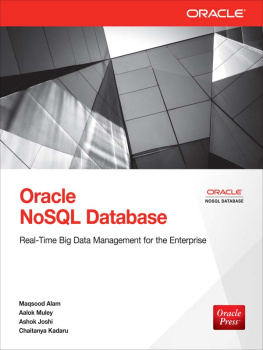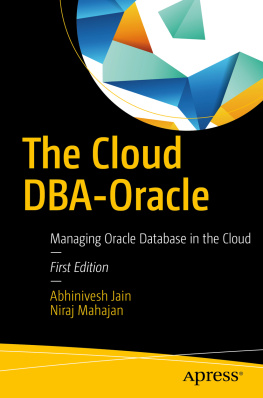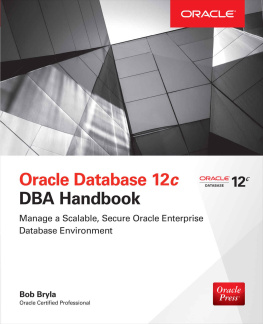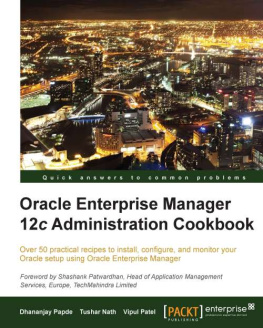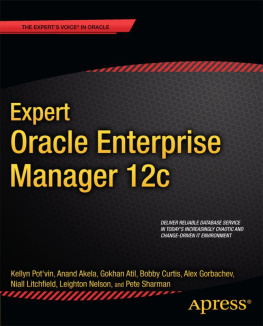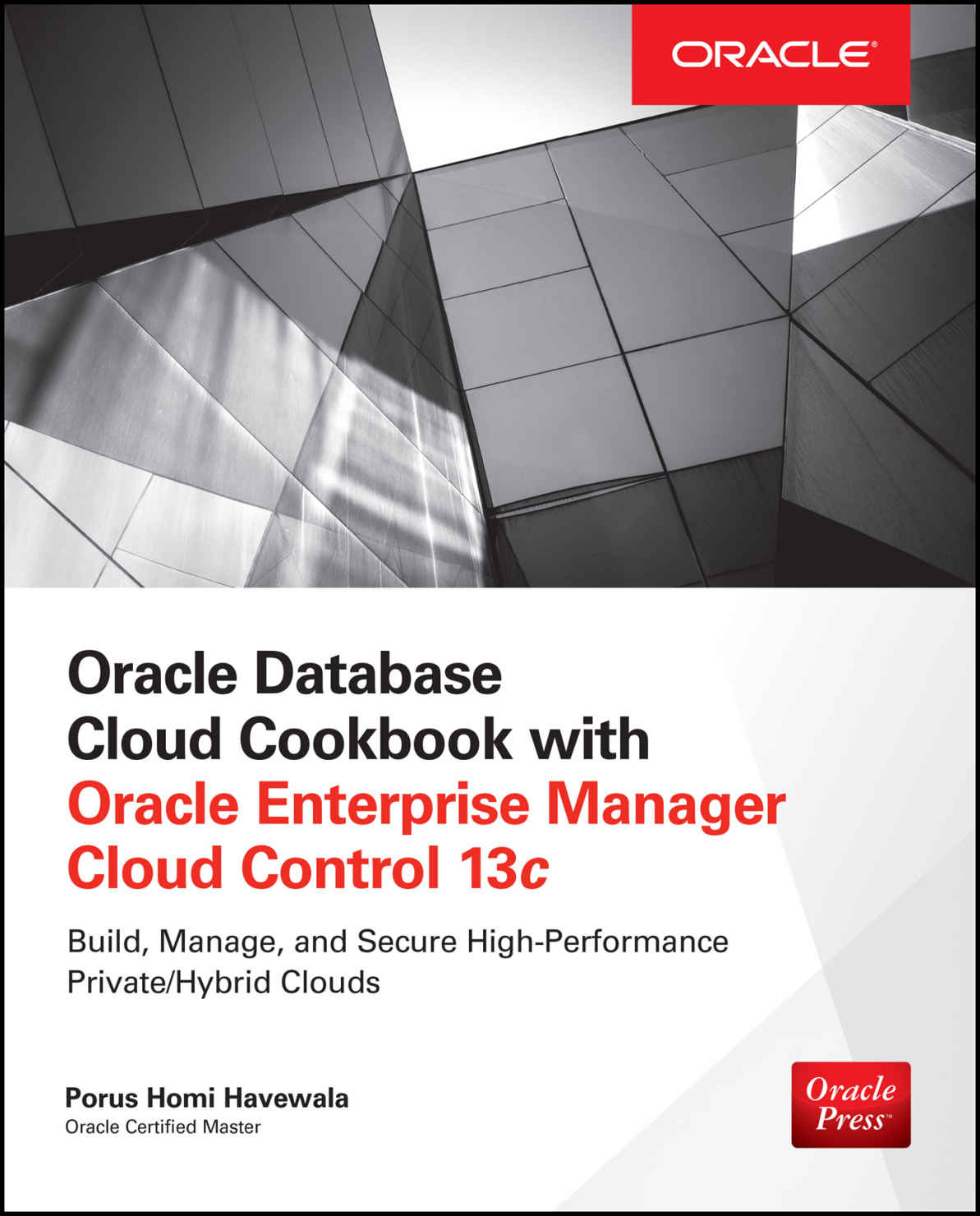About the Author
Porus Homi Havewala works as the Strategic Program Advisor in the Enterprise Architecture office (ASEAN) at Oracle Corporation Singapore and is a regional Subject Matter Expert (SME) on Oracle Enterprise Manager Technology, specifically concentrating on private database cloud capabilities on Oracle systems. He is a double Oracle Certified Master (OCM) in 10g and 11g , as well as the first Oracle employee ACE in Singapore. He was awarded the prestigious Oracle ACE Director title in 2008. There are less than 200 Oracle ACE Directors in the entire world and Porus was the very first Oracle ACE and ACE Director in Singaporerecognition of his outstanding achievements in the Oracle world.
Porus has had extensive experience in Oracle technology since 1994; this includes work as a Senior Production DBA, Principal Database Consultant, Database Architect, E-Business Technical DBA, Development DBA, and Database Designer and Modeler (using Oracle Designer). He has published 13 technical articles and 3 white papers on Oracle Enterprise Manager on OTN, and his work has been featured on the most popular OTN article list. The OTN is the worlds largest community of developers, DBAs, and architects.
Porus created http://enterprise-manager.blogspot.com , one of the worlds first blogs dedicated to Enterprise Manager. He is also the creator and manager of the Oracle Senior DBA group on LinkedIn.com , with more than 58,000 members.
Porus is the sole author of the 2010 book Oracle Enterprise Manager Grid Control (Rampant TechPress). He is also the sole author of the 2012 book Oracle Enterprise Manager Cloud Control 12c: Managing Data Center Chaos (PACKT Publishing).
He started in the IT industry in the mid-1980s as a Turbo-C programmer in India and then as a dBase/FoxPro Developer in Australia. In 1994 he wrote a book on Microsoft FoxPro 2.5/2.6, which was his first published technical work, from Wordware Publishing. He entered the heady world of Oracle technology in 1994 as an Oracle DBA/developer (using Oracle Forms, Oracle Reports, and Oracle Designer) in multiple-client companies.
In the largest telecommunications company in Australia, Porus was the Senior Database Consultant in the central DBA team for a number of years and was responsible for database standards, database architecture, and the architecture, setup, and management of the first production Enterprise Manager Grid Control 10g site in the world. He next worked in Oracle Advanced Customer Services (ACS) India (Mumbai), and then with an Oracle Platinum Partner, S&I Systems in Singapore, before rejoining Oracle Corporation in the same city.
Porus is an enthusiast for Oracle technology, especially Oracle Enterprise Manager, on which he has conducted popular seminars and webinars for large multinational corporations, and has implemented this powerful enterprise toolset. Because Enterprise Manager is the backbone of the Oracle Database Cloud, it was a natural progression for him to work on and write on the myriad Database as a Service capabilities of Oracle technology. He enjoys the power of Oracle technology.
About the Technical Editors
Richard Ridge has more than 15 years of experience in the IT industry, including working in both Australia and the United Kingdom, predominantly for global financial, telecommunications and retail companies. His technical background is as a Senior DBA with specialist knowledge of SQL Server and Oracle software and management of DB2 platforms. Richards management experience includes running large multifunctional teams (2030 staff) with a combination of onshore and offshore resources. He and Porus worked together in the early 2000s.
Kamran Aghayev A. is an Oracle ACE Director and Oracle Certified Master DBA with seven years of experience managing UNIX-based Oracle Databases. Currently he is working at AzerCell Telecom as an Expert DBA and also serves as a lecturer teaching Oracle Database Administration at Qafqaz University.
Kamran is an author of the book Oracle Backup & Recovery: Expert Secrets for Using RMAN and Data Pump and also publishes a popular blog at http://kamranagayev.com .
He has also presented at Oracle Open World conference twice (2010/2011) at San Francisco, Thailand Oracle User Group (OUGTH), and Turkish Oracle User Group (TROUG) events.
Copyright 2017 by McGraw-Hill Education (Publisher). All rights reserved. Except as permitted under the United States Copyright Act of 1976, no part of this publication may be reproduced or distributed in any form or by any means, or stored in a data base or retrieval system, without the prior written permission of the publisher.
ISBN: 978-0-07-183354-7
MHID: 0-07-183354-4
The material in this eBook also appears in the print version of this title: ISBN: 978-0-07-183353-0, MHID: 0-07-183353-6.
eBook conversion by codeMantra
Version 1.0
All trademarks are trademarks of their respective owners. Rather than put a trademark symbol after every occurrence of a trademarked name, we use names in an editorial fashion only, and to the benefit of the trademark owner, with no intention of infringement of the trademark. Where such designations appear in this book, they have been printed with initial caps.
McGraw-Hill Education eBooks are available at special quantity discounts to use as premiums and sales promotions or for use in corporate training programs. To contact a representative, please visit the Contact Us page at www.mhprofessional.com .
Oracle is a registered trademark of Oracle Corporation and/or its affiliates. All other trademarks are the property of their respective owners, and McGraw-Hill Education makes no claim of ownership by the mention of products that contain these marks.
Screen displays of copyrighted Oracle software programs have been reproduced herein with the permission of Oracle Corporation and/or its affiliates.
Information has been obtained by Publisher from sources believed to be reliable. However, because of the possibility of human or mechanical error by our sources, Publisher, or others, Publisher does not guarantee to the accuracy, adequacy, or completeness of any information included in this work and is not responsible for any errors or omissions or the results obtained from the use of such information.
Oracle Corporation does not make any representations or warranties as to the accuracy, adequacy, or completeness of any information contained in this Work, and is not responsible for any errors or omissions.
TERMS OF USE
This is a copyrighted work and McGraw-Hill Education and its licensors reserve all rights in and to the work. Use of this work is subject to these terms. Except as permitted under the Copyright Act of 1976 and the right to store and retrieve one copy of the work, you may not decompile, disassemble, reverse engineer, reproduce, modify, create derivative works based upon, transmit, distribute, disseminate, sell, publish or sublicense the work or any part of it without McGraw-Hill Educations prior consent. You may use the work for your own noncommercial and personal use; any other use of the work is strictly prohibited. Your right to use the work may be terminated if you fail to comply with these terms.
THE WORK IS PROVIDED AS IS. McGRAW-HILL EDUCATION AND ITS LICENSORS MAKE NO GUARANTEES OR WARRANTIES AS TO THE ACCURACY, ADEQUACY OR COMPLETENESS OF OR RESULTS TO BE OBTAINED FROM USING THE WORK, INCLUDING ANY INFORMATION THAT CAN BE ACCESSED THROUGH THE WORK VIA HYPERLINK OR OTHERWISE, AND EXPRESSLY DISCLAIM ANY WARRANTY, EXPRESS OR IMPLIED, INCLUDING BUT NOT LIMITED TO IMPLIED WARRANTIES OF MERCHANTABILITY OR FITNESS FOR A PARTICULAR PURPOSE. McGraw-Hill Education and its licensors do not warrant or guarantee that the functions contained in the work will meet your requirements or that its operation will be uninterrupted or error free. Neither McGraw-Hill Education nor its licensors shall be liable to you or anyone else for any inaccuracy, error or omission, regardless of cause, in the work or for any damages resulting therefrom. McGraw-Hill Education has no responsibility for the content of any information accessed through the work. Under no circumstances shall McGraw-Hill Education and/or its licensors be liable for any indirect, incidental, special, punitive, consequential or similar damages that result from the use of or inability to use the work, even if any of them has been advised of the possibility of such damages. This limitation of liability shall apply to any claim or cause whatsoever whether such claim or cause arises in contract, tort or otherwise.


